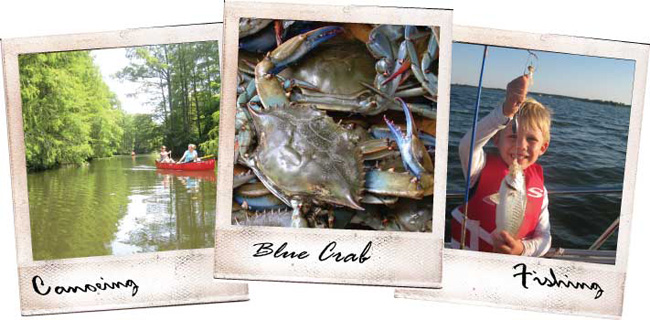Wetlands provide many important economic, social, and environmental benefits.
Coastal wetlands are important sources of food, refuge, and nursery grounds for many fish and shellfish species. It is estimated that 85-95 percent of our recreationally and commercially important coastal fisheries rely on tidal wetlands as a place to shelter and grow their young.
When the plants growing in these tidal wetlands breakdown and decompose, the organic material they make becomes an important food source in the marsh food web. The tiny fragments of decomposing plants are also carried out into the open water and serve as food for plankton and up the chain to commercially important fish such as oysters and striped bass.
Both coastal and inland freshwater wetlands are unique places existing between land and water. These special places serve as habitat for many rare plant and animal species. They also serve as nesting, feeding, and nursery grounds for fish, birds, insects, reptiles, amphibians, and mammals.
Research is underway to estimate the economic value of wetlands in Delaware. In 2011, DNREC commission a study of the Economic Valuation of Wetland Ecosystem Services In Delaware.
Wetlands contribute to groundwater and surface water supplies, both of which serve as drinking water sources in Delaware. Wetlands help store and purify surface waters before they are collected downstream.
In times of drought, wetlands play a key role in storing and holding water. Without wetlands rainwater would run off straight into streams and ditches to eventually enter rivers, bays, and the ocean. With wetlands, rainwater can be absorbed and held then slowly released downstream and into the groundwater.
During droughts this contribution is essential to municipal water supplies and agricultural irrigation sources.
The biology and ecology of wetlands are incredible sources of educational topics and materials. The opportunities to share nature with children are invaluable.
Increasingly, schools are restoring wetlands on their property to use as outdoor classrooms, providing a hands-on environment for learning science, math, language, and art. Some Delaware schools have become involved in creating, restoring, or utilizing wetlands in their schoolyards.
Great numbers of sport and recreational fish species are dependent on wetlands for feeding and spawning. Several popular waterfowl species are also deeply connected to wetlands for feeding, resting, and reproduction.
A U.S. Fish and Wildlife Service survey in 2006 reported that in Delaware, wildlife-associated recreation spending reached almost $300 million. Fishing accounted for $97 million, hunting for $41 million, and wildlife watching for $131 million.
These hobbies are greatly dependent on wetland resources and drive an industry to supply the equipment and guide needs of those that enjoy wildlife-related recreation. To learn more about recreation in wetlands please visit our Enjoy Wetlands page.
